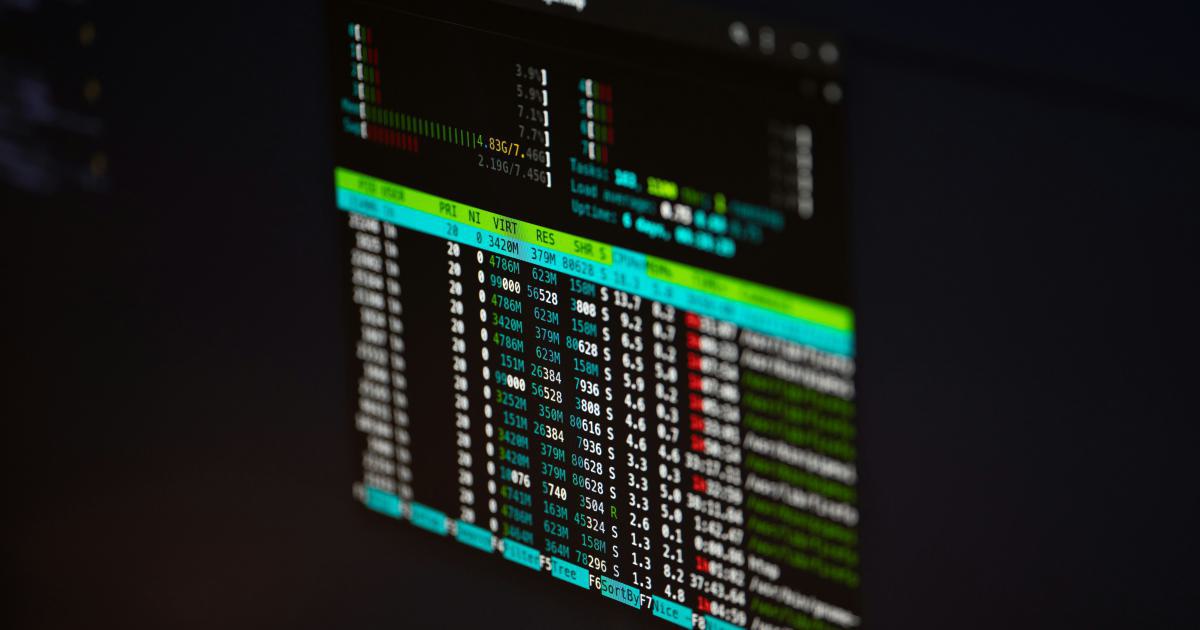Unlocking Gains Through Real-Time Momentum Analysis

Real-time momentum analysis has become a cornerstone for today’s investors and traders who seek to unlock rapid gains and maintain a competitive edge in dynamic markets. In this comprehensive article, we dive into the depths of real-time momentum analysis, exploring its principles, techniques, and actionable strategies. By integrating advanced analytics with market behavior understanding, traders can better navigate market volatility and capitalize on short-term trends. Our discussion will cover the evolution of momentum analysis, the tools necessary for its effective implementation, and how algorithmic trading platforms optimize these techniques in real-world scenarios.
The Fundamentals of Momentum Analysis
Momentum analysis is the study of speed and intensity of price movements in markets. It is based on the idea that assets trending in a particular direction are likely to continue in that direction for a period. Traditionally, momentum analysis involved more static indicators; however, with the advent of modern computing power and data analytics, real-time momentum analysis has emerged as a powerful technique. This advanced approach not only evaluates the intensity of price moves but also adapts quickly to rapid market changes by interpreting data as soon as it becomes available.
Momentum analysis stands on the shoulders of concepts derived from physics, particularly momentum itself – the product of mass and velocity. Translating this into financial markets, “mass” can be associated with trade volume or liquidity, while “velocity” relates to the speed of price movements. When traders apply these principles, they often rely on common technical indicators like the Moving Average Convergence Divergence (MACD), Relative Strength Index (RSI), and various oscillators that signal overbought or oversold conditions.
Real-time momentum analysis enhances these techniques by integrating live data feeds and algorithmic decision-making, thus reducing the delay between signal generation and trade execution. It creates opportunities to capture fleeting market inefficiencies, making it an essential tool for modern-day traders. This approach is particularly beneficial in environments that are extremely volatile, where traditional manual analysis might fail to capture swift changes in market sentiment.
The Evolution of Market Analysis
Historically, market analysis was rooted in long-term trends and economic fundamentals. Investors relied on periodic financial statements and quarterly reports to make decisions. However, as markets evolved and technology advanced, the paradigms of analysis shifted. With electronic communications networks (ECNs) and high-frequency trading (HFT) emerging, speed became a crucial factor. Real-time momentum analysis is a product of this evolution, enabling market participants to decode price movements instantaneously and adjust their positions on-the-fly.
This evolution not only shifted the analysis from long-term snapshots to continuous monitoring but also spurred the development of sophisticated algorithms capable of processing massive amounts of data in real-time. As market participants strive to grasp the nuances of a rapidly shifting landscape, these techniques have proven invaluable. Their integration into trading platforms means that traders are not only reacting to price changes, but also forecasting and preparing for imminent movements.
The practical application of these tools can be observed in high-frequency trading, where algorithms execute thousands of trades within seconds. In such environments, a delay of even a few milliseconds can result in significant financial losses. Real-time momentum analysis helps in minimizing this delay by providing instantaneous insights, which, when combined with robust trading systems, ensure timely order execution and improved asset allocation.

Tools and Techniques for Real-Time Momentum Analysis
Real-time momentum analysis finds its success by harnessing a variety of tools and technologies that can sift through and interpret complex data sets swiftly. In this section, we explore several tools and techniques that are crucial for implementing this approach effectively.
Data Aggregation and Processing
At the core of real-time momentum analysis is data – the lifeblood of any analytical system. Modern trading platforms aggregate data from various sources including live market feeds, social media, economic indicators, and news sources. This conglomeration of data streams is processed using big data technologies, which allow traders to visualize patterns and correlations that might be invisible in static data sets.
The challenge lies in dealing with data in its raw form. Advanced pre-processing techniques, such as normalization, noise reduction, and filtering, become necessary for cleansing and structuring the data swiftly. Techniques like Fourier transforms and wavelet analysis are also used to decompose the signals into their components. This aids in identifying not only the trend but also the periodical fluctuations that can precede major market shifts.
Technical Indicators Enhanced by Real-Time Data
Traditional technical indicators have long served traders as decision-making tools. With the advent of real-time data, these indicators have been refined to react more quickly and precisely. Some of the key tools include:
- Moving Averages: These smooth out price data to highlight trends over a set period. Real-time adjustments allow moving averages to adapt as new data is introduced.
- Relative Strength Index (RSI): This momentum oscillator measures the speed and change of price movements. In real-time systems, RSI continually re-calibrates, providing updated insights into market overbought or oversold conditions.
- Bollinger Bands: By factoring in volatility and standard deviations, Bollinger Bands adjust their range as market conditions change rapidly.
Integrating these indicators with real-time analysis means that traders can benefit from highly adaptive systems that react immediately to market volatility. By using algorithms to interpret these signals, traders can set automated triggers for entering or exiting trades, thus optimizing their strategies in milliseconds.
Algorithm Integration and Machine Learning
A pivotal advancement in real-time momentum analysis is the integration of machine learning and artificial intelligence. Machine learning algorithms excel at pattern recognition and adapt based on historical data, which significantly enhances the predictive capacity of traditional indicators. Advanced models such as neural networks and decision trees are now shaping trading strategies through continuous learning and adaptation.
These machine learning systems can simulate numerous scenarios and back-test trading rules against historical market data. By doing so, they refine the decision-making process continuously, ensuring that the models remain relevant even as market dynamics evolve. Moreover, by incorporating sentiment analysis from social media and news outlets, they provide a holistic view that encompasses both quantitative and qualitative data.
In addition, automated trading platforms that utilize real-time momentum analysis can execute trade volumes far beyond human capability. Automation removes the lag of human decision-making and provides a systematic approach to both identifying and seizing market opportunities.

Real-Time Momentum Analysis Techniques for Market Success
Real-time momentum analysis is not just about deploying technologies; it is an art that combines data interpretation with an understanding of market psychology. In this section, we examine the strategic elements of leveraging real-time data to unlock gains and mitigate risks.
Behavioral Trends and Market Sentiments
Understanding market sentiment is critical to real-time momentum analysis. While technical indicators provide a numerical framework for understanding trends, market sentiment often drives these trends. Behavioral trends are influenced by a mix of factors including investor psychology, geopolitical events, and global economic shifts.
Traders increasingly rely on tools that gauge sentiment through social media analytics, news sentiment scoring, and real-time surveys. By mapping these qualitative data sources with quantitative indicators, one gains a more nuanced view of market direction. Real-time momentum analysis benefits significantly from this integrated approach, as it aligns technical signals with the market’s collective emotional state.
For instance, during periods of economic uncertainty, sentiment analysis can reveal abrupt shifts in market confidence before traditional indicators register these changes. This split-second foresight can be crucial for adjusting positions rapidly, turning uncertainty into profitable opportunities. Behavioral finance thus intertwines with real-time momentum analysis to create a dynamic framework for decision-making.
Subsection: Real-Time Momentum Analysis: Techniques for Market Success
In applying real-time momentum analysis, experienced traders typically follow a structured approach:
Data Acquisition: The process begins with gathering extensive data sets from various high-frequency sources. This encompasses live price feeds, order book data, and even derivative markets.
Indicator Integration: Merging traditional technical indicators with real-time updates provides a dual-layer confirmation of market movements.
Sentiment Overlay: Incorporating sentiment analysis to validate and challenge the quantitative signals ensures that the model accounts for human behavioral tendencies.
Algorithmic Execution: Sophisticated algorithms then compute optimal entry and exit points, automatically triggering trades to exploit fleeting opportunities.
Continuous Feedback: Systems are set up to constantly learn from market outcomes, refining the parameters to enhance future performance.
By following these steps, users tap into both the speed of modern data processing and the depth of market sentiment, creating a resilient strategy that adapts to market shifts almost instantly.
Combining Short-Term and Long-Term Perspectives
Real-time momentum analysis doesn’t operate in isolation. Successful traders often blend short-term signals with long-term trend analysis. While real-time data can highlight immediate opportunities, long-term analysis helps in understanding the broader market context and underlying trends. This integrated approach enables traders to mitigate risks and avoid overreacting to transient market noise.
For example, a sudden surge in buying volume might indicate a potential breakout, but coupling that with long-term stability indicators can reinforce the decision to invest further. Conversely, if a short-term spike is not supported by broader market trends, it may signal a false alarm. Balancing these perspectives ensures sustained success over various market cycles and reduces the likelihood of significant losses due to misinterpretation of data.
The Role of Automation in Real-Time Momentum Analysis
In today’s fast-paced trading environment, automation plays an essential role in implementing real-time momentum analysis. Automated systems can execute trades within fractions of a second, a speed unattainable by human traders. In this section, we explore how automation enhances the effectiveness of real-time momentum analysis and the challenges it may present.
Automated Trading Systems
Automated trading systems use predefined rules to trigger trades based on real-time data. These systems are often integrated into professional trading platforms and rely on advanced algorithms that continuously assess market conditions. By eliminating emotional bias and human reaction delays, automated trading ensures that strategies are executed exactly as planned.
Many automated trading systems incorporate complex decision-making protocols beyond basic indicators. They perform multivariate analysis by considering historical trends, current price action, and dynamic market indicators simultaneously. The algorithms are custom-tailored to adjust thresholds based on real-time market stress and volatility. This continual adjustment is what makes these systems especially robust during periods of unexpected market turbulence.
Integration of Machine Learning
Machine learning elements within automated systems have further revolutionized the trading landscape. They provide self-improving mechanisms that evaluate the outcome of each trade and refine decision thresholds. For example, reinforcement learning models can simulate thousands of trades to learn optimal strategies, which can subsequently be deployed in live markets. The feedback loop inherent in machine learning ensures that even as markets evolve, the trading system remains adaptive and responsive.
Moreover, the deployment of AI-powered risk management systems in automated trading platforms allows traders to identify potential pitfalls in real-time. These systems can dynamically adjust stop-loss orders, hedge positions, or even temporarily suspend trading if market conditions deviate from historical norms. Such integrated risk management processes are crucial when employing real-time momentum analysis, as they protect the portfolio against the adverse effects of sudden market reversals.
Balancing Speed and Accuracy
While speed is a significant advantage of automation, ensuring that this speed does not come at the cost of accuracy is paramount. Developers of these systems devote significant effort to optimizing network latencies and computational efficiencies. The goal is to design systems that minimize delays while maintaining the integrity of data processing.
A notable challenge is mitigating the risk of “flash crashes” or sudden, unexplained market dips caused by algorithmic trading errors. To address this, safeguards such as circuit breakers and real-time audits are incorporated within the systems to halt trading or alert operators in abnormal market conditions. By striking the right balance between speed and cautious accuracy, traders can leverage automation to maximize gains without succumbing to the pitfalls of over-automation.

Risk Management in Real-Time Momentum Analysis
No investment strategy is without risk, and real-time momentum analysis is no exception. Even though the approach enhances the ability to spot opportunities swiftly, it also requires rigorous risk management protocols to mitigate potential losses. In this section, we discuss the importance of risk management and outline best practices to maintain portfolio health during volatile market conditions.
Identifying Potential Pitfalls
Rapid market movements, while offering lucrative gains, also carry the danger of significant losses. In the context of real-time momentum analysis, the sheer speed of transactions sometimes prevents deeper consideration of underlying risks. For instance, an unanticipated market news event might trigger a trading algorithm to execute a series of rapid-fire orders that lead to a loss. Therefore, identifying early warning signals and establishing trigger points is crucial.
One common practice is to integrate stop-loss orders and take-profit levels into the algorithmic model. Stop-loss triggers help cap potential losses by automatically selling positions if market prices dip below a predetermined threshold. Conversely, take-profit orders secure gains once the asset reaches a specified high. Such measures prevent the emotional decision-making pitfalls that can occur when human traders are put under pressure during volatile moments.
Implementing Risk Controls and Checks
Effective risk management in real-time momentum trading requires an intricate design that encompasses several layers of checks. These include:
- Position Sizing: Carefully controlling the amount of capital allocated to any single trade reduces the exposure to adverse market swings.
- Diversification: Spreading investments across different asset classes or markets minimizes the impact of a downturn in any one sector.
- Real-Time Monitoring: Setting up dashboards that provide real-time alerts enables traders to react quickly to evolving market situations.
- Circuit Breakers: Automated triggers that pause trading during extreme market volatility can safeguard against catastrophic losses.
Integrating these controls within the real-time momentum analysis system not only mitigates risk but also instills confidence in traders. By combining robust analytical models with protective measures, one can enjoy the rapid benefits of momentum trading while ensuring long-term portfolio stability.
Case Studies: Learning from Experience
To illustrate the importance of risk management in real-time momentum analysis, consider the case of a trading firm that successfully navigated a sudden market downturn. The firm had implemented an automated momentum trading strategy that, on the surface, appeared robust. However, an unforeseen geopolitical event sent shockwaves through the global economy, triggering precipitous price drops. Fortunately, the firm’s risk management protocols, including dynamic stop-loss orders and automated position scaling, allowed them to minimize losses significantly while capturing a subsequent recovery. Such real-world examples underscore the necessity of a multifaceted risk management framework.
Real-World Examples and Case Studies
Examining real-world examples can provide deeper insights into how real-time momentum analysis is applied across various trading environments. In this section, we showcase several case studies that highlight both the success stories and lessons learned from challenging market conditions.
Case Study 1: High-Frequency Trading in a Volatile Market
A leading hedge fund integrated real-time momentum analysis into its high-frequency trading algorithms. By coupling live market data feeds with machine learning models, the fund was able to detect micro-movements in the pricing of technology stocks. During an unexpected earnings announcement, the system's rapid processing capabilities allowed it to capitalize on the immediate price surge, generating substantial profits within minutes. This example demonstrates how real-time momentum analysis, when paired with high-frequency trading, can deliver significant gains even in unpredictable conditions.
Case Study 2: Adapting to Sudden Market Shifts
Another striking example comes from a retail trading platform that embraced automated trading systems. The platform’s algorithms continuously monitored market sentiment and technical indicators. When an abrupt market shift occurred due to an international trade dispute, the algorithms swiftly adjusted trading thresholds and rebalanced portfolios. Although the market experienced substantial volatility, the system’s ability to integrate sentiment analysis with real-time momentum data helped avert potential massive losses and even captured beneficial market rebounds. This case illustrates the resilience offered by combining multiple data sources with automated risk controls.
Best Practices Derived from Case Studies
Drawing lessons from these examples, several best practices emerge:
- Continuously update algorithms based on emerging market trends and historical performance.
- Integrate a diverse range of data sources, including traditional technical indicators and sentiment analysis.
- Test and recalibrate systems with real-world scenarios to identify potential weaknesses.
- Implement rigorous risk management protocols to guard against sudden market reversals.
These case studies affirm that while real-time momentum analysis offers lucrative opportunities, its effectiveness is maximized when it is part of a broader, well-managed trading strategy.

Strategies for Effective Implementation
Implementing a successful real-time momentum analysis system involves careful planning, advanced technology adoption, and continuous monitoring. In this section, we delve into actionable strategies that traders and institutions can follow to harness the full potential of this analytical approach.
Step 1: Infrastructure and Data Management
A robust technological infrastructure forms the cornerstone of successful real-time momentum analysis. This includes investing in high-speed data connections, dedicated servers, and reliable trading platforms. The data management system must be capable of handling large volumes of information at sub-second speeds. Traders should ensure that data security, latency reduction, and error-checking protocols are in place to maintain system integrity.
Step 2: Algorithm Development and Backtesting
Developing sophisticated algorithms is crucial. Traders should begin by designing models that incorporate both technical indicators and sentiment data. These models must be rigorously backtested against historical market data to evaluate their performance under diverse market conditions. Backtesting helps in identifying strengths, limitations, and potential areas for enhancement. Iterative development, where algorithms are fine-tuned based on backtesting feedback, leads to more reliable systems.
Step 3: Continuous Learning and Optimization
The market is constantly evolving, and so should your trading system. Employ machine learning techniques that allow algorithms to learn from past trades and market cycles. Continuous improvement is achieved through real-time analysis of performance metrics, regular updates, and the integration of the latest technological advancements. Setting up a dedicated team to oversee these changes can further enhance the adaptability and resilience of the trading system.
Step 4: Monitoring and Human Oversight
Even the most advanced systems require human oversight. Establish dashboards and monitoring tools that provide detailed insights into system operations and market conditions. Human intervention remains critical when technology faces unprecedented scenarios or technical glitches. Regular audits and scenario simulations can help in identifying potential vulnerabilities before they escalate into larger issues.
Step 5: Integrating with Broader Investment Strategies
For many institutions, real-time momentum analysis should be integrated with broader investment strategies. This integration ensures that short-term gains are balanced with long-term market positioning. Collaboration between quantitative analysts, risk managers, and portfolio managers allows for a holistic approach to trading, ensuring that the system’s output is always contextualized within the overall investment strategy.
Future Perspectives and Innovations in Real-Time Analysis
The evolution of real-time momentum analysis is ongoing. As machine learning, big data, and cloud computing technologies advance, the potential for more accurate and efficient analysis grows exponentially. Here are a few trends and innovations that are set to redefine this space:
Enhanced Predictive Models
The next wave of innovation in real-time momentum analysis will likely involve predictive models that incorporate not only current market data but also macroeconomic indicators and geopolitical events. Enhanced predictive models can forecast potential market shifts with greater confidence by connecting complex global data sets with localized trading signals.
Integration with Blockchain and Decentralized Systems
Blockchain technology promises to add layers of transparency and security to data feeds. In the near future, decentralized data aggregation networks might redefine how real-time momentum analysis is performed, offering traders unfiltered and tamper-proof data sources. This innovation could further extend the reliability and robustness of automated systems.
Artificial Intelligence and Adaptive Learning
AI research continues to drive improvements in adaptive learning, meaning that future trading systems may autonomously adjust their strategies in ways that are even more precise than current machine learning algorithms. The integration of neural networks, particularly those specialized in anomaly detection, is likely to minimize risks and improve predictive accuracy across volatile markets.
The Impact on Global Trading Ecosystems
As real-time momentum analysis becomes the norm, its influence on global trading ecosystems will grow. Small and medium-sized enterprises (SMEs) may gain access to the same high-speed analysis technologies once reserved for institutional investors, potentially democratizing access to sophisticated trading strategies. This shift could reshape market dynamics, potentially leading to more competitive trading environments and improved market efficiency.
Conclusion
Real-time momentum analysis represents a significant breakthrough in the art and science of trading. By leveraging modern data analytics, machine learning, and automated trading systems, traders can secure quick gains while managing risks effectively. The integration of technical indicators with real-time sentiment and behavioral analysis provides a comprehensive toolset to navigate volatile market environments. With robust infrastructure, continuous optimization, and dedicated risk management, harnessing real-time momentum analysis is no longer a luxury but a necessity for those seeking to unlock gains in modern markets.
This detailed article has walked through the evolution of momentum analysis, its current applications, and strategies for effective implementation. The real-world examples and case studies illustrate the practical utility of these methods, while future innovations promise even more refined techniques. The journey of real-time momentum analysis is dynamic, much like the markets themselves, and its continued evolution will undoubtedly shape the future of trading.
By embracing this powerful analytical tool, traders can shift from reactive measures to proactive strategies, capturing opportunities as they arise in the blink of an eye. Whether you are an institutional investor or an individual trader, the ability to swiftly adapt to market movements offers both competitive advantage and the potential for significant financial gains.
In summary, integrating real-time momentum analysis into your trading operations is an investment in precision, speed, and ultimately, success. With each technological advancement and analytical refinement, the road to unlocking gains becomes more accessible and impactful.
Unleash the Power of Automated Trading Analysis
Are you struggling to keep up with the fast-paced trading world? TrendSpider empowers you with cutting-edge tools for optimal strategy execution.
Our automated technical analysis suite eliminates guesswork, backtests strategies, and delivers real-time alerts, saving you valuable time and effort.
Shion Tanaka
64 posts written





